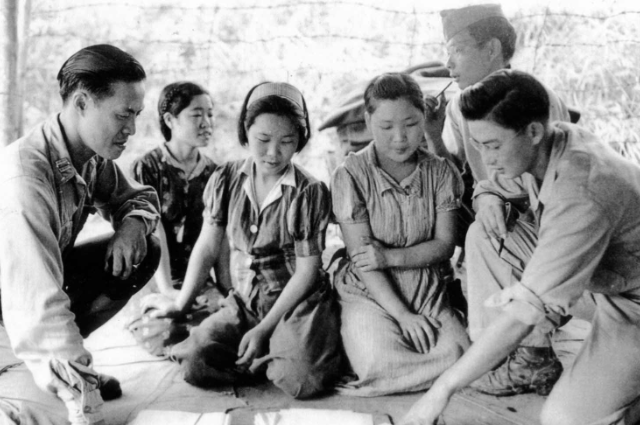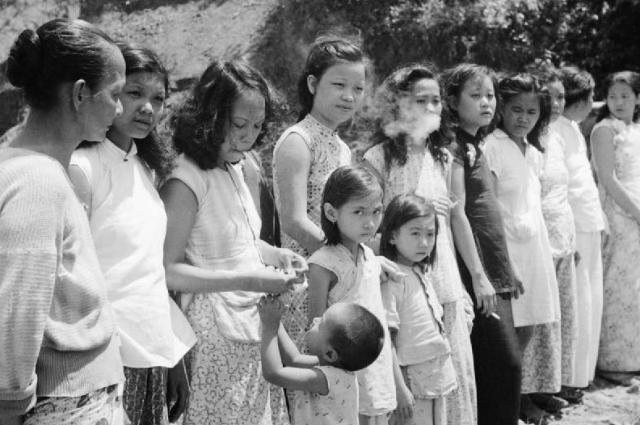The details of their enslavement remain painful and controversial in Japan and the former occupied countries, despite the fact that the first women were forced into sexual slavery for Imperial Japan nearly a century ago. The subjugation of women is not well documented; only a small percentage of "comfort women" survived the war, with an estimated 90% of them dying. Despite having existed in the Japanese military since 1932, military brothels gained significant traction after the Rape of Nanking, one of the most well-known incidents in imperial Japan's campaign. On December 13, 1937, Japanese troops began a six-week massacre that nearly destroyed the Chinese city of Nanking.
The world was horrified by the mass rapes, and Emperor Hirohito was concerned about how they would impact Japan's image. In an effort to prevent more crimes, reduce the number of STIs, and ensure a stable and segregated group of sex workers to satisfy the sexual cravings of Japanese soldiers.
The Real Story of Comfort Women
The system of sexual slavery known as "comfort women" was instituted and supervised by the Imperial Japanese government between 1932 and 1945. This is the largest case of human trafficking and state-sponsored sexual slavery in modern history. Many scholars argue that the euphemism "comfort women," coined by the Japanese military, minimizes the gravity of the crime. In this article, the term "comfort women" refers specifically to the victims of the Japanese military's system of sexual slavery during World War II. Although estimates of the precise number of victims vary, most academics agree that hundreds of thousands of women, including girls as young as twelve, suffered harm. Although a large number of women from Malaysia, Indonesia, the Philippines, Japan, and Taiwan,
The majority of those forced into sexual slavery were from Korea and China, and they included European women in Japanese-occupied territories as well as women from Vietnam, Thailand, East Timor, and the Dutch East Indies. As a significant historical precedent in sexual violence and human trafficking, the comfort women's history is poorly understood, but educators are increasingly recognizing the issue. Because it affected many women and taught us the value of human rights, the case study of comfort women is a significant historical issue, much like other historical atrocities like the sexual degradation of many black women in US antebellum slave states and contemporary international sexual human trafficking.
Teachers can more effectively highlight the importance of protecting human rights by using comfort women's personal stories as teaching materials because they provide students with a clear picture of the impact that violations of human rights have on people's lives. Although the comfort women's stories are graphic, understanding the violations of their human rights is crucial. An open and sincere conversation that teaches students to critically evaluate both historical and current events would be beneficial for students who are exposed to how today's wars and atrocities are portrayed in the media.
Comfort women's violent past
Early in the 20th century, Japan gradually increased its power and control over East Asia by annexing Taiwan in 1895, Korea in 1905 and 1910, and Manchuria in 1932 under a puppet government. Beginning with the Second Sino-Japanese War (1937), which ultimately resulted in World War II, Asia was constantly at war. During the years of constant war, from the early 1930s to 1945, the Japanese Imperial Army created and maintained the comfort women system. Unquestionably, the system was created and operated by the Japanese military, as evidenced by official Japanese military records and firsthand accounts.
Comfort stations initially opened in Shanghai in 1932 and subsequently expanded to other locations like Japan, China, the Philippines, Indonesia, Malaya, Thailand, Burma, East New Guinea, Hong Kong, Macau. There were comfort stations everywhere the Japanese troops went. To recruit women for the brothels was akin to kidnapping or coercing them. Women were either rounded up on the streets, purchased from their parents as indentured servants, or convinced to go to what they thought were nursing homes or employment in Japanese-occupied areas. The majority of these women were Chinese or Korean, but they came from all over Southeast Asia. Although each woman's story was different, there are a lot of similarities between them.
Testimonies about severe physical pain, pregnancy, sexually transmitted diseases, depressing conditions, and recurrent rapes that increased in frequency prior to battles. There was no place for humans. The Japanese military established the system for a number of reasons, including preventing rapes by Japanese soldiers, controlling soldier behavior, preventing venereal diseases among the troops, and boosting army morale, in order to stop the escalation of hostility among the inhabitants of occupied areas. In 2007, Associated Press reporters discovered that American authorities allowed "comfort stations" to remain open long after the war ended, and that tens of thousands of women in the brothels were compelled to engage in sexual relations with American men until the practice was shut down by Douglas MacArthur in 1946.
Yong Soo Lee's account of the horrors in the aftermath of World War Two
However, after World War II, Japanese officials destroyed records on the system, so the numbers are based on estimates from historians using a variety of existing documents. As Japan recovered from World War II, the history of its enslavement of women was downplayed, seen as a disgusting remnant of a past that people would rather forget. In contrast, society shunned women who had been forced into sexual slavery. Many of them killed themselves, while others died of STIs or other illnesses brought on by the cruel treatment they endured at the hands of Japanese soldiers.
For many years, the history of the "comfort women" was disregarded and undocumented. Officials in Japan denied the subject when it was raised, asserting that "comfort stations" had never been established. Then, in the 1980s, some women began sharing their stories. After the Republic of South Korea became a liberal democracy in 1987, women started to talk about their experiences. South Korea's criticism of a Japanese official's denial of the events in 1990 sparked a worldwide controversy. But in the years that followed, more women came forward to testify. The atrocities were eventually acknowledged by the Japanese government in 1993.
However, the subject has remained controversial ever since. Eventually, in 2015, the Japanese government announced that it would compensate the remaining Korean "comfort women." But after a review, South Korea called for a stronger apology. Japan recently condemned that request as a reminder that the issue is still relevant to earlier foreign relations today. A few dozen women who were forced into sexual slavery by Japan remain today. One of them is Yong Soo Lee, a 90-year-old survivor who has openly expressed her desire for an apology from the Japanese government. She stated in an interview with the Washington Post in 2015 that "I never wanted to give comfort to those men." "I can never forgive what happened to me, even though I don't want to hate or harbour resentment."
Conclusion
The experiences of many other victims, both living and dead, are reflected in the stories of these women. Sex trafficking and exploitation are violations of civil liberties and human rights. Because they depict a systemic, state-sponsored sex trafficking operation during the war as well as an ongoing issue, the Comfort Women make an important case study. As Margaret Stetz points out, teaching about comfort women will help a new generation understand their experiences of sexual violence and cultivate empathy for these victims, who deserve help. The testimonies of former comfort women enable us to delve into their private lives and approach this issue from a human perspective that transcends the media's frequent portrayal of the comfort women issue as a nationalist conflict between Korea and Japan surpasses national boundaries.


